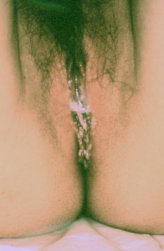|
Curable STDs - Infections
|
|
Gonorrhea II
|
|
|
|
|
Gonorrhea discharge
|
|

|
|
Above:
Discharge from the vagina
Below:
Discharge from the penis
|
|
|
|
Click on pictures
|
|
|
|
|
|
4. What are the symptoms?
The typical symptoms of gonorrhea are itching or pain in the infected area and a burning discharge. They usually appear within a few days after an infection but may also take a couple of weeks to develop. Generally speaking, females are more easily infected through vaginal intercourse than males. Not only that: Many females remain free of symptoms. They are infectious without knowing it and thus also unknowingly infect their sexual partners. At the same time, the disease continues to cause internal damage to the female reproductive system and often leads to infertility. Here is a brief summary:
Females: Many infected females have no symptoms. Others have some vaginal discharge and/or experience pain when urinating.
Males: Most infected males do have a yellowish-greenish, burning discharge from the penis.
Both sexes: If the mouth is infected, the symptoms are a sore throat and swollen glands. If the rectum is infected, there is likely to be a bloody, pus-like discharge as well as rectal itching and pain.
5. How is it diagnosed?
Gonorrhea is diagnosed by taking a sample from the affected body area - sex organs, throat, or rectum – and examining it in a laboratory. There, after staining the sample, the bacteria causing the disease are visible under a microscope.
|